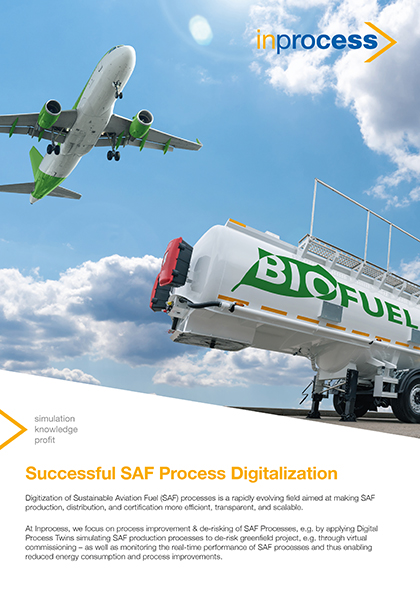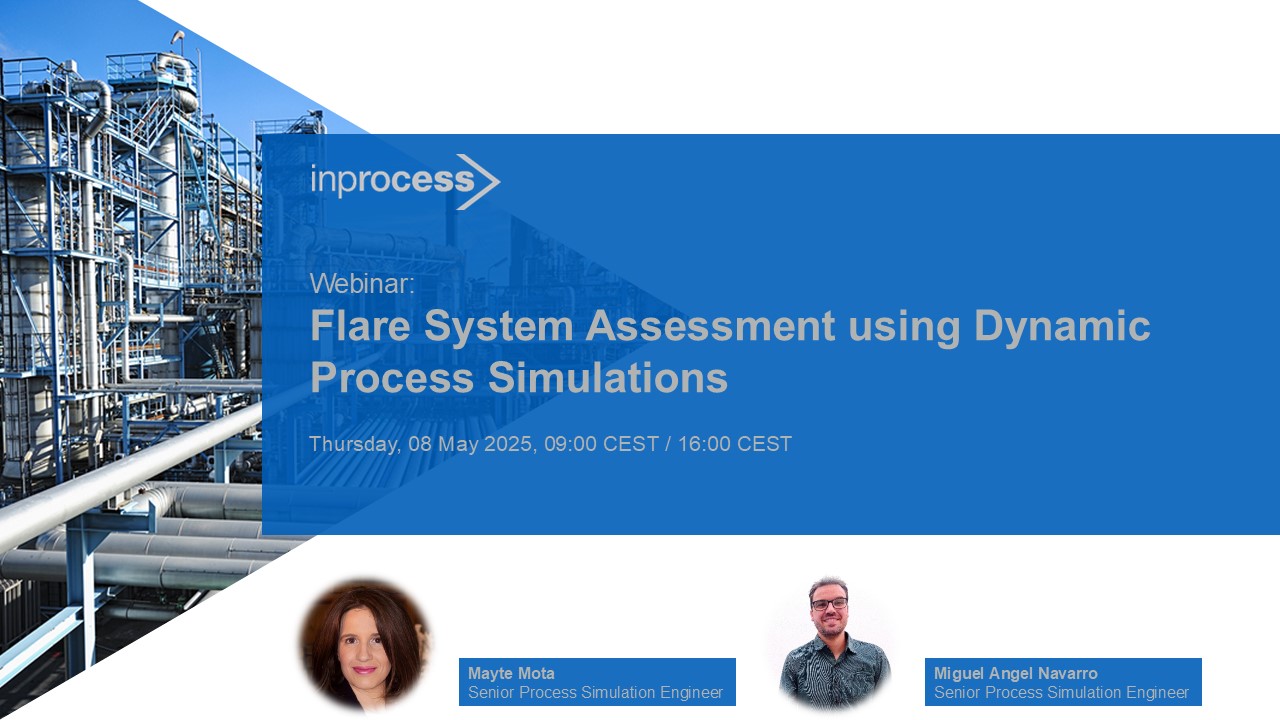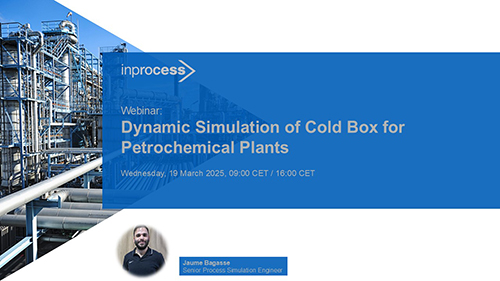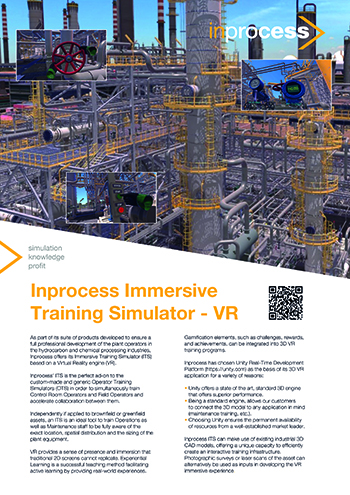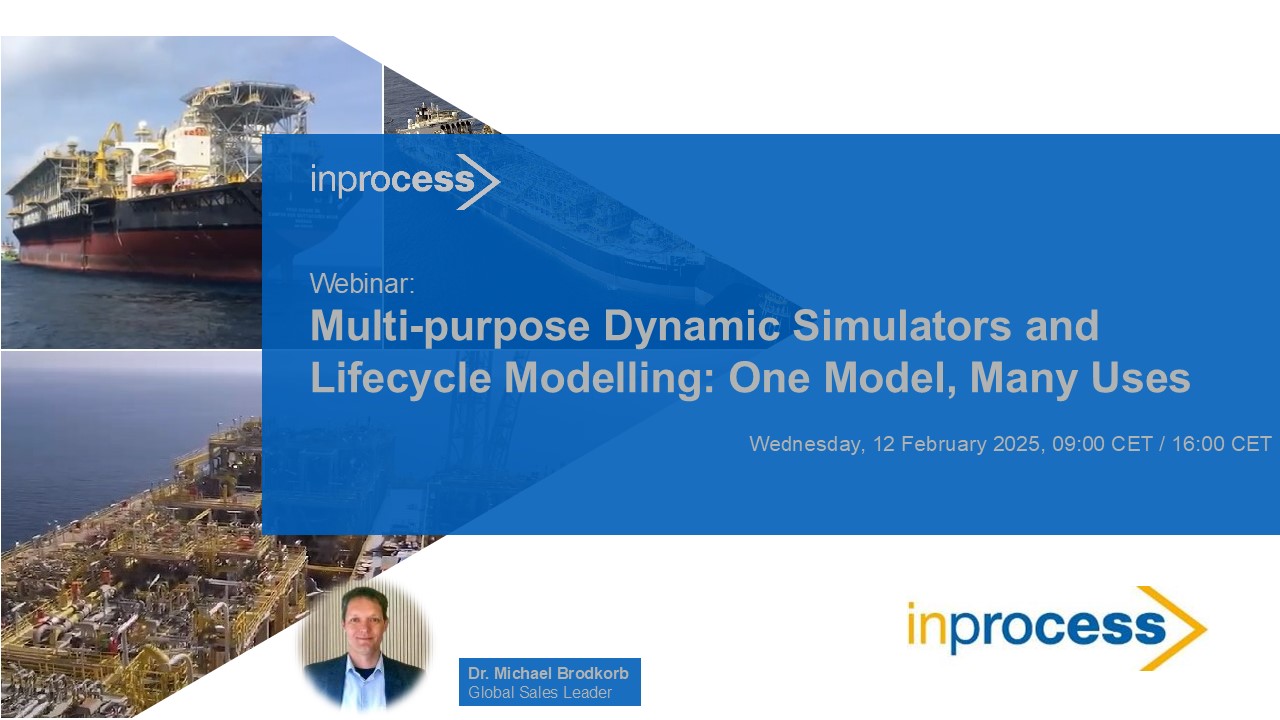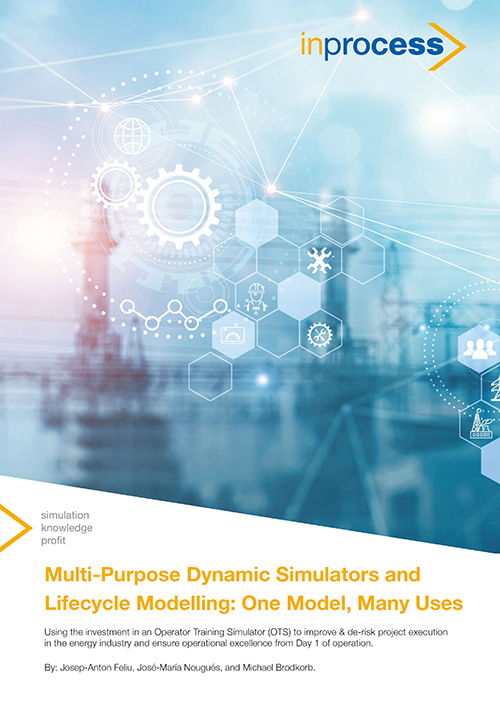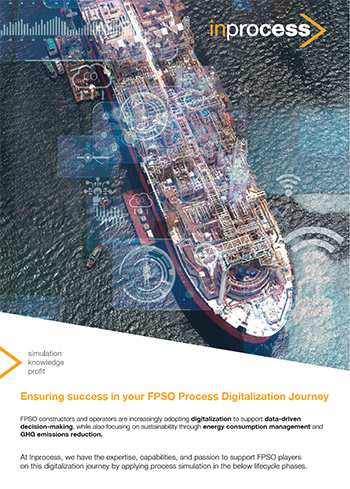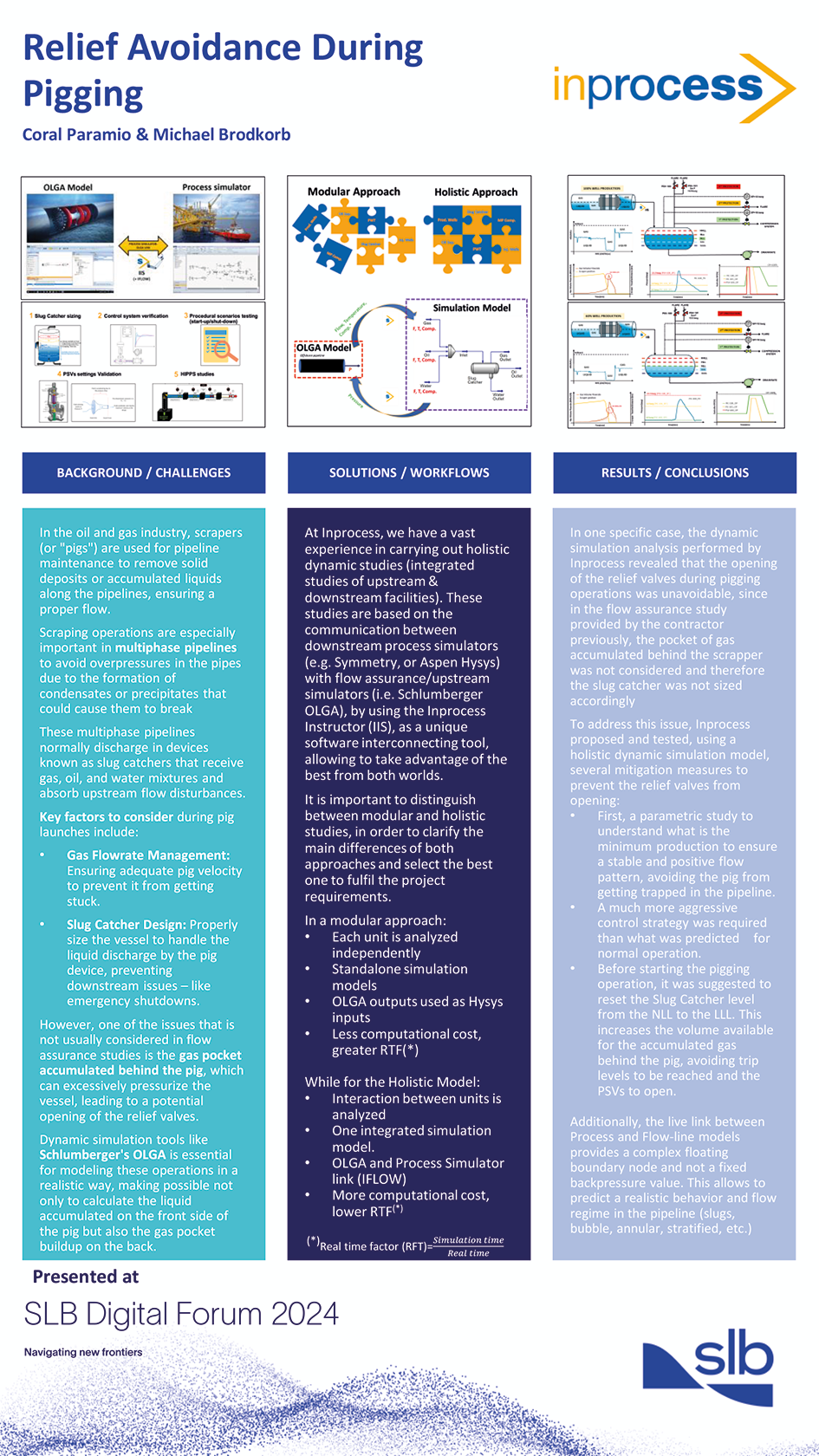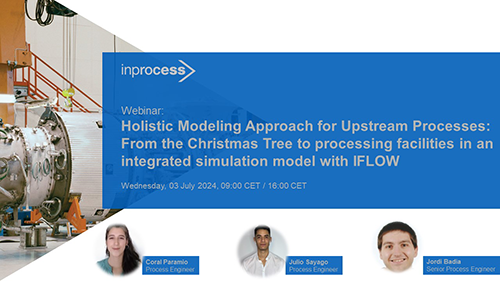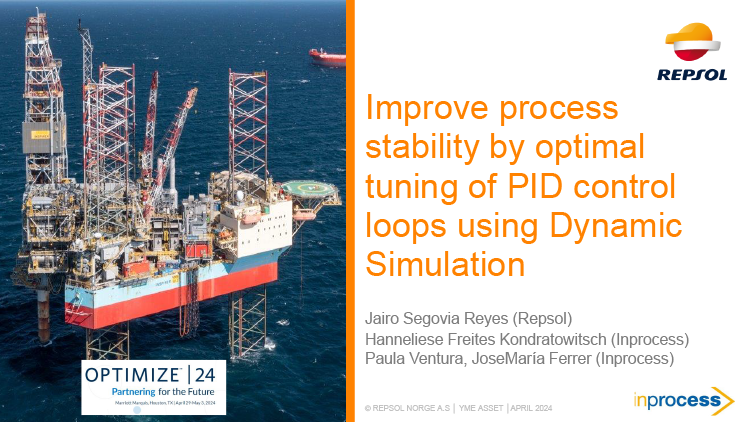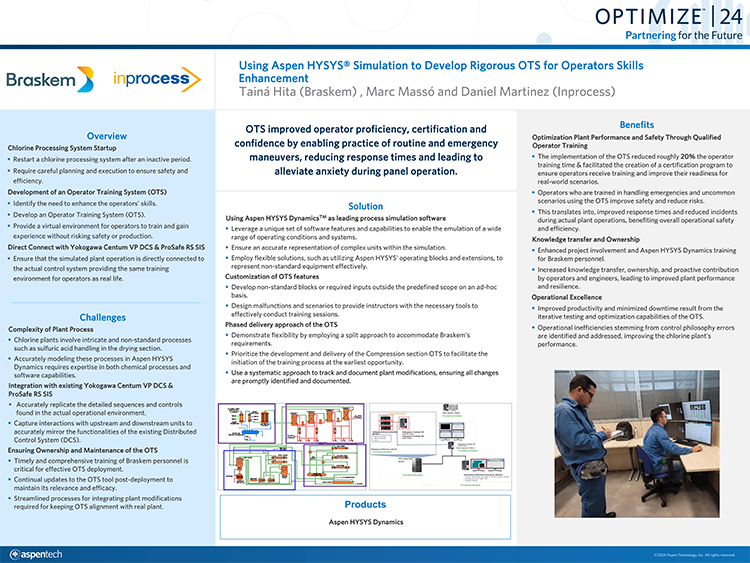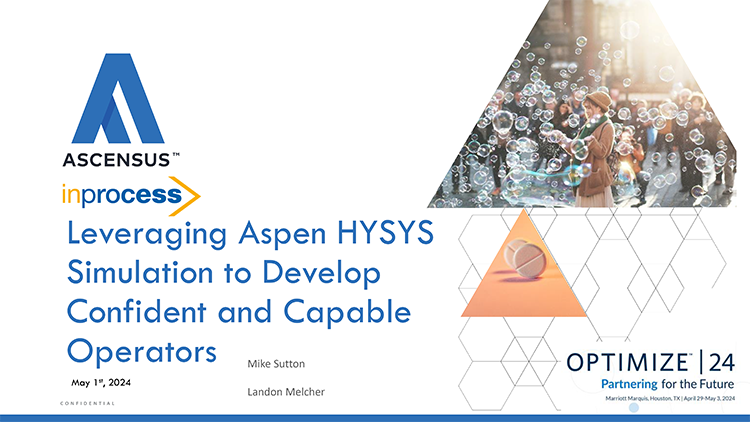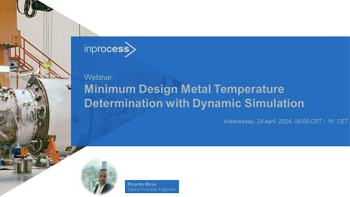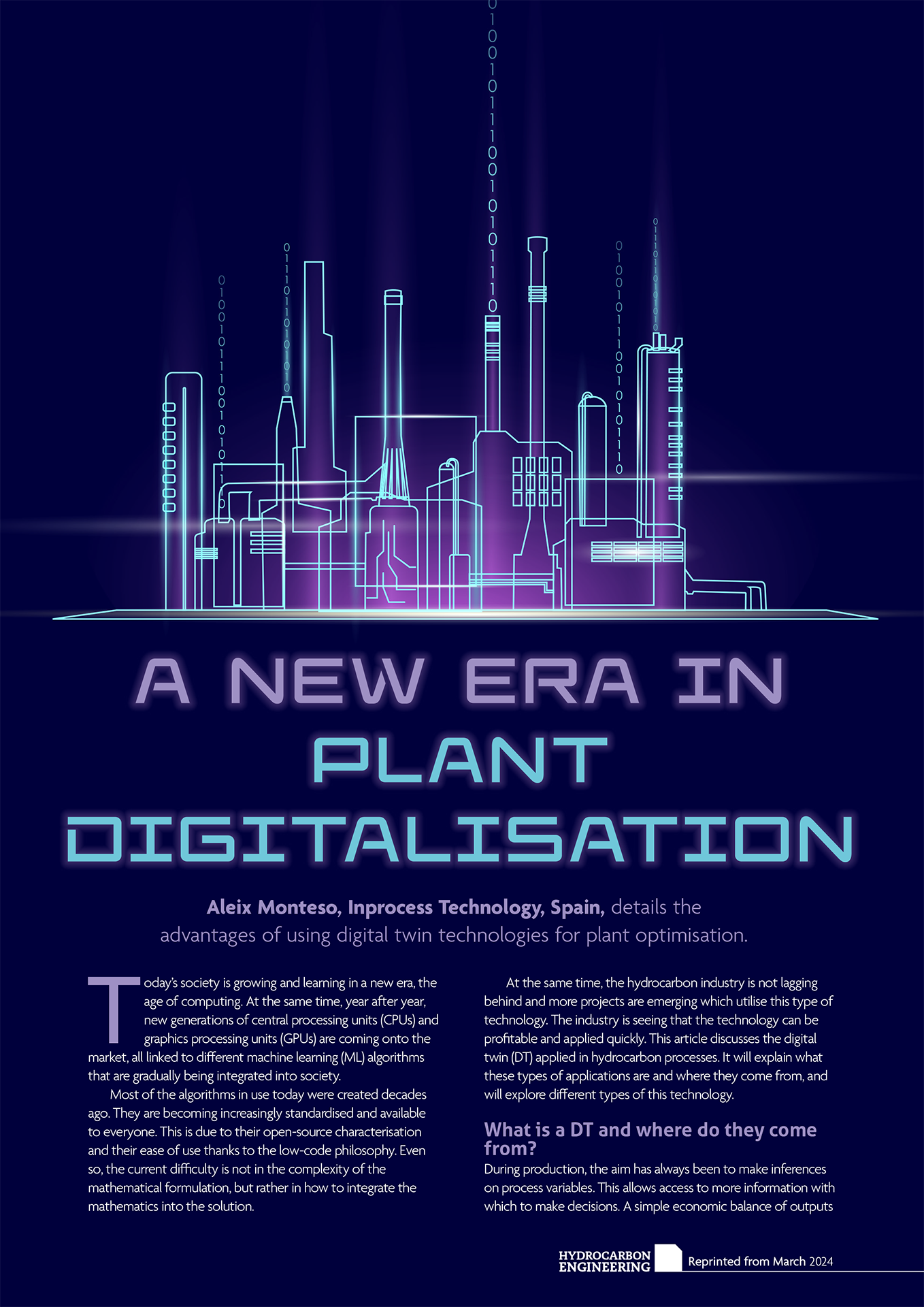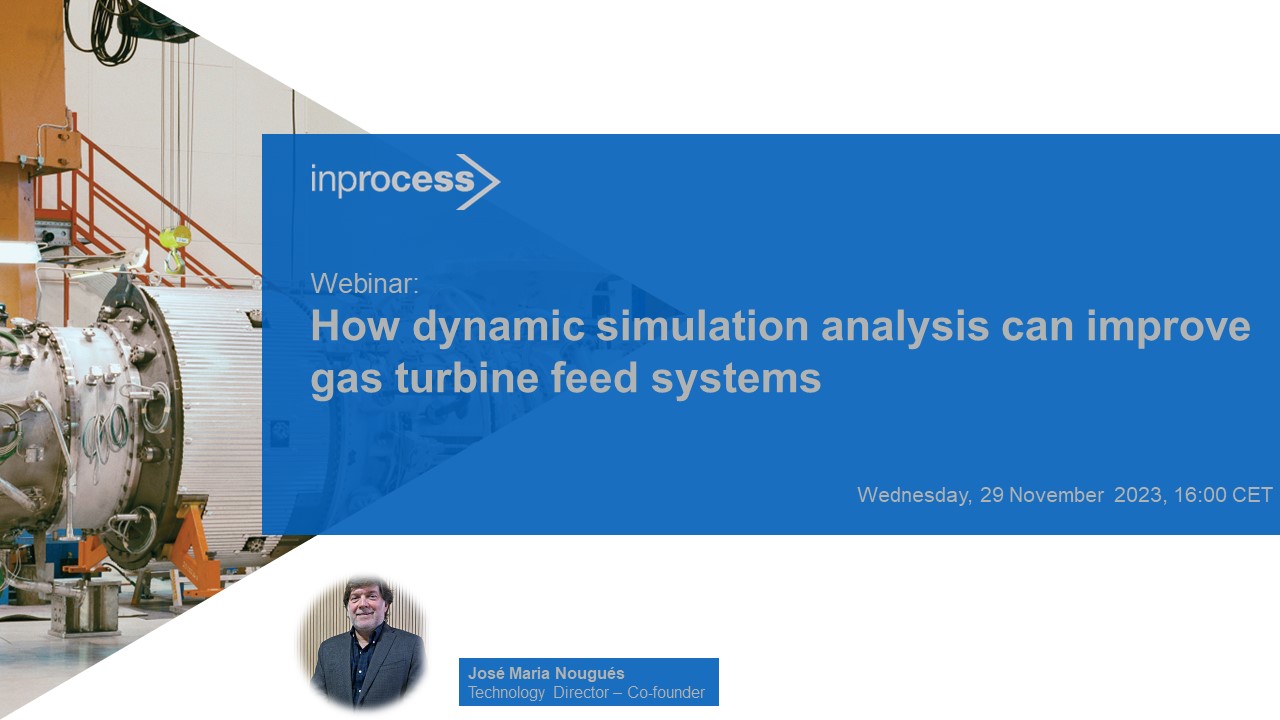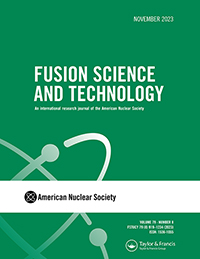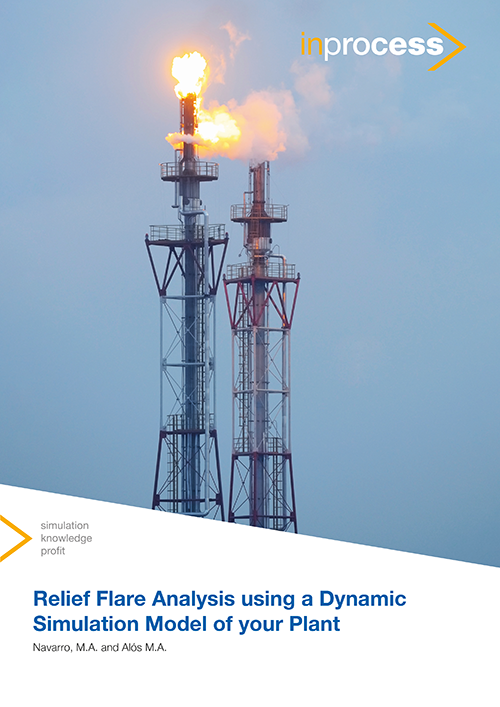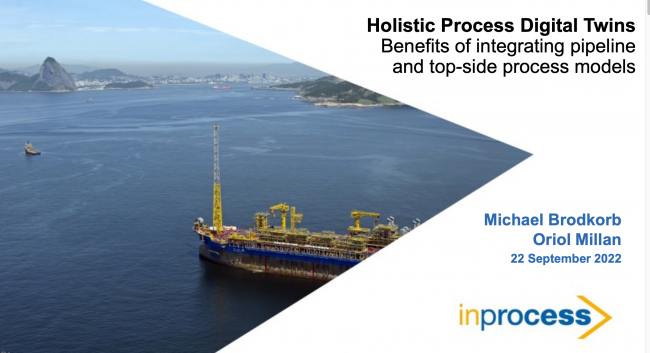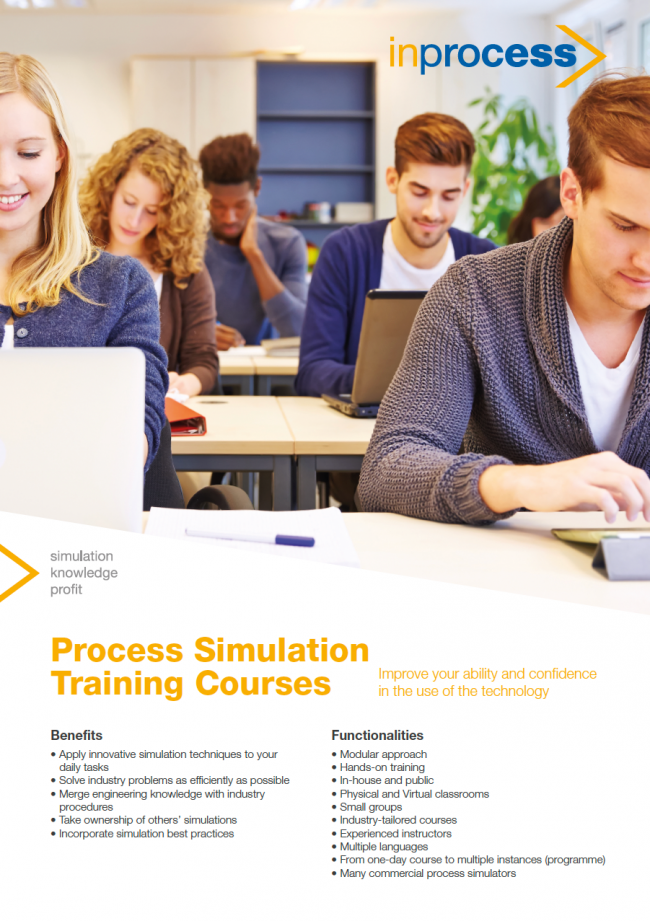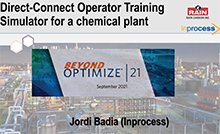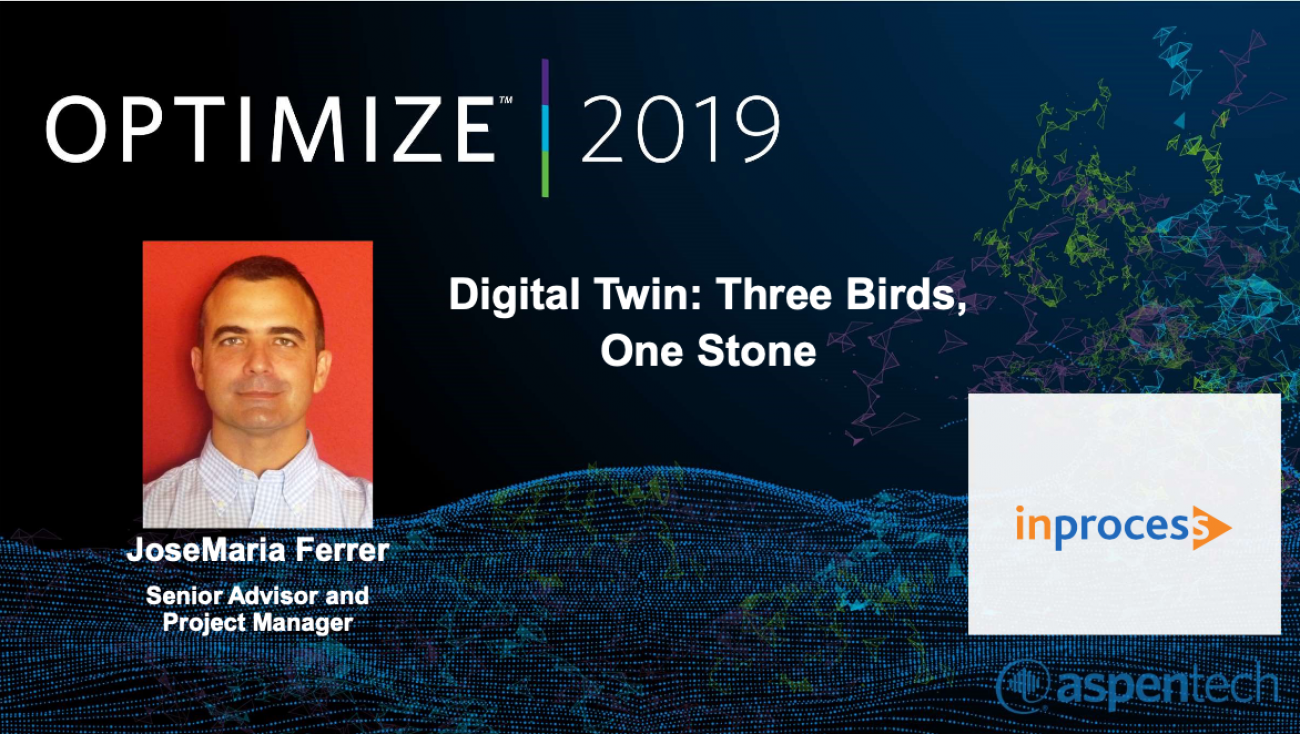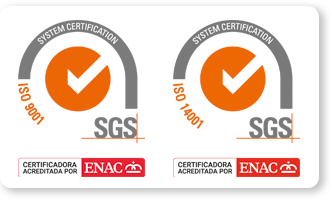Knowledge hub
Inprocess staff participate in congresses, meetings and events where we explain our successes and work in general in the form of presentations and reports. In this section you can find a variety of informative articles which are free to download.
Select Filter
Content type:
Markets:
Product / Solution:
Results:
Webinar 2025 | Dr. Josep-Anton Feliu
Del mismo modo que los jardineros no necesitan estudiar Botánica para realizar su trabajo (aunque comprender los conceptos básicos de la Botánica —como la fisiología vegetal, los ciclos de crecimiento, la reproducción y las interacciones con el entorno— les ayuda a tomar mejores decisiones...
Webinar 2025 | Dr. Josep-Anton Feliu
In the same way that gardeners do not need to study Botany to carry out their work (although understanding basic Botany—such as plant physiology, growth cycles, reproduction, and interactions with the environment—helps them make better decisions about plant care ...
Brochure
The Sustainable Aviation Fuel (SAF) market is evolving fast and Inprocess is part of that journey. Our new brochure shows how we optimize , de‑risk , and accelerate SAF projects through digitalization and dynamic simulation.
Webinar 2025 | Judit Vallés
In this session, we have explored how traditional Operator Training Simulators (OTS) can be complemented with Virtual Reality (VR) environments in order to accelerate learning, eliminate risk, and provide a fully realistic and simultaneous learning experience for both control room and field operators.
Webinar 2025 | Dr. Mayte Mota, Dr. Miguel Angel Navarro
In this session, we have explored how Inprocess applies Steady State and especially Dynamic process simulation techniques to analyze flare loads and flare network behavior. Learn how our expertise has helped clients identify hidden constraints, optimize system performance, and reduce CapEx spending —without compromising the plant safety.
Webinar 2025 | Jaume Bagasse
In this webinar, Jaume Bagasse, our Senior Process Simulation Engineer, walks you through our approach, featuring a case study on the Cold Box within a Steam Cracker Unit.
Brochure
The Inprocess Immersive Training Simulator (ITS) utilizes Virtual Reality (VR) to enhance operator training in the hydrocarbon and chemical industries, integrating with Operator Training Simulators (OTS) to provide a realistic, immersive learning experience.
Webinar 2025 | Dr. Michael Brodkorb
The Multi-Purpose Dynamic Simulator (MPDS) introduces an innovative approach that extends the application of dynamic process modelling across the design, commissioning, and operational phases, maximizing its value throughout the plant lifecycle.
Article 2024 | Josep-Anton Feliu, José-María Nougués and Michael Brodkorb
This white paper from Inprocess introduces the Multi-Purpose Dynamic Simulator (MPDS) approach—demonstrating how a single dynamic simulation model can be reused throughout the entire lifecycle of a process facility. From early engineering and virtual commissioning to operator training and real-time operational support, MPDS helps reduce project risks, improve safety, and maximize the return on simulation investment.
Brochure
FPSO constructors and operators are increasingly adopting digitalization to support data-driven decision-making, while also focusing on sustainability through energy consumption management and GHG emissions reduction.
In this episode our experts explains how dynamic simulation can be a powerful tool which can offer solutions to challenges encountered in MDMT determination during Oil & Gas projects design phases, leading to significant investment savings
Congress 2024 | Michael Brodkorb, Coral Paramio
Inprocess poster contribution that explains how our holistic dynamic simulations bridge the gap between upstream and downstream models, offering realistic insights and improved operation strategies.
Webinar 2024 | Coral Paramio, Julio Sayago, Jordi Badia
In this webinar, you will discover how Inprocess’ innovative approach of integrating flow assurance and process dynamic simulations using IFLOW can optimize equipment sizing, enhance controllers’ parameters, and set precise alarm limits to ensure seamless facility operations.
Article 2024 | Ricardo Moya Chamizo
This technical paper highlights the critical role of analyzing and mitigating challenges in fluid transport within the oil and gas industry. It addresses issues such as hydrate and wax formation, corrosion, flow instabilities, and water-hammer effects, which can disrupt operations.
Webinar 2024 | Hanneliese Freites
This webinar explains Repsol Norge's advancements in enhancing process uptime.
Webinar 2024 | Landon Melcher
This webinar showcases how Ascensus Specialties has achieved significant benefits by implementing an Operator Training Simulator (OTS) for their hydrogen production plant.
Congress 2024 | José María Nougués
In the context of FPSO, where the extraction, processing, and storage of hydrocarbons occur offshore and often in harsh environments, the benefits of virtual commissioning are particularly relevant.
Congress 2024 | Jairo Segovia Reyes (Repsol), Hanneliese Freites Kondratowitsch (Inprocess), Paula Ventura (Inprocess), JoseMaría Ferrer (Inprocess)
This presentation explains Repsol Norge's advancements in enhancing process uptime.
Congress 2024 | Jorge Parés(Inprocess), Mário Hermes(3R), Mateus Monteiro(3R), Herbert Senzano(3R), José María Nougués(Inprocess)
This presentation reveal an innovative approach utilized by 3R Petroleum in managing their gas pipelines and their associated inventories.
Congress 2024 | Tainá Hita (Braskem) , Marc Massó and Daniel Martinez (Inprocess)
Our OTS solution applies dynamic simulation through Aspen HYSYS® Dynamics to rigorously model the plant and to create a realistic training environment for operators.
Webinar 2024 | Dr. Jordi Pla
This webinar showcases validation and development of a dynamic simulation model as well as identification of bottleneck and critical points.
Congress 2024 | Mike Sutton (Ascensus), Landon Melcher (Inprocess)
This presentation showcases how Ascensus Specialties has achieved significant benefits by implementing an Operator Training Simulator (OTS) for their hydrogen production plant.
Webinar 2024 | Ricardo Moya
This webinar will equip you with the knowledge to optimize and enhance your material selection process using Dynamic Simulation results.
Article 2024 | Aleix Monteso
Today’s society is growing and learning in a new era, the age of computing. At the same time, year after year, new generations of central processing units (CPUs) and graphics processing units (GPUs) are coming onto the market, all linked to different machine learning (ML) algorithms that are gradually being integrated into society. Most of the algorithms in use today were created decades ago.
Webinar 2023 | José María Nougués
This webinar explores how dynamic process simulations, when used during the early design stage, can significantly improve the reliability of your gas turbine feed systems. These simulations can also help prevent costly shutdowns, leading to smoother operations.
Article 2023 | Eduardo Iraola, José M. Nougués, Lluís Batet, Josep A. Feliu, Luis Sedano
Tritium represents a hazard due to its radioactivity and migration properties. Because of these difficulties, ITER, the largest fusion experiment so far, relies on a conservative static procedure to monitor the tritium inventory. Future commercial fusion plants can avoid operation halts if a dynamic monitoring strategy proves itself valid.
Article 2023 | José María Nougués
This technical paper presents an in-depth analysis of gas turbine feed gas systems in power plants, focusing
on dynamic process simulations to enhance reliability and availability.
Webinar 2023 | Manel Serra
A comprehensive and engaging training tool designed specifically for operations staff in the chemical and hydrocarbon processing industries. It combined theory sessions, 3D animation, interactive virtual labs, and enables progress tracking with exercises.
Article 2023 | Miguel-Ángel Navarro and Miquel-Àngel Alós (Inprocess)
The common solution in industry when a flare system reaches its limits it to increase its capacity: CAPEX solution. As experts of the domain, Inprocess proposes Dynamic Simulation Model for higher accuracy of behavior prediction as well as for alternative solutions for flare capacity issues.
Congress 2023 | Miquel Ángel Alós, Miguel Ángel Navarro
Inprocess oral contribution to MECCE held in May 2023. This presentation conducted by Dr. Miquel Angel Alos explains the benefits of dynamic simulation as an alternative method for defining relief loads and enhancing the understanding of relief processes.
Congress 2023 | Eduardo Iraola, José M. Nougués, Lluis Batet, Josep Anton Feliu, Lluis Sedano
Inprocess oral contribution to MECCE held in May 2023, Eduardo Iraola's presentation explores the future of enhanced control with digital twins for inventory and emissions monitoring in the process industry.
Webinar 2023 | Marc Massó
The CCR system plays a crucial role in the refining process, and any inefficiencies or breakdowns can have a significant impact on the productivity and safety of the facility. Having properly trained operators to handle its functioning is key for the entire refinery.
Congress 2022 | Dr. Michael Brodkorb, Oriol Millán (Inprocess)
Inprocess oral contribution to SLB Digital Forum 2022 held in September 2022. This presentation conducted by Dr. Michael Brodkorb explains how to analyze the dynamic behavior and interaction between wells, remote stations,
Webinar 2022 | Manel Serra
Inprocess has extensive experience in the development and implementation of online hydrogen network management tools that have helped the petrochemical industry and refineries achieve operational savings without capital investment.
Congress 2022 | José María Ferrer, Landon Melcher (Inprocess)
Inprocess oral contribution to ACOWUG 2022 held in June 2022. This presentation introduces the Digital Twins and the particular use case of creating inferentials for APC.
Congress 2022 | Eduardo Iraola de Acevedo, José M. Nougués, Josep A. Feliu (Inprocess), Lluís Batet (UPC), Luis Sedano (FUS_ALIANZ)
Contribution showing the modeling procedure of a critical tritium processing system such as the Tokamak Exhaust Processing using a commercial simulator typically used in the process industry.
Brochure
Is the current equipment size appropriate for safe plant operation?
Save CapEx without compromising safety by benefiting from previously oversized flare networks.
Brochure
Assure and maximize the operation of your production system while minimizing risks.
Brochure
Simulate, predict and optimize product and production during plant lifecycle
Brochure
The optimization of the hydrogen network signifies one of the strategic and operational priorities for refineries around the world to address the challenges of their energy transition
Brochure
ITOP is the Inprocess approach to the education of operators and young engineers in subjects such as Process Engineering and Unit Operations. This approach combines process simulation-based exercises with classroom training, motivating attendees to experience complex theory subjects through hands-on exercises.
Brochure
Ensure DCS database is error free before plant commissioning.
Brochure
Train operators earlier in their careers. Be independent of DCS database delivery
Brochure
Base your design decisions on rigorous engineering calculation results.
Brochure
Benefit from new learning opportunities!
Brochure
ICOM is a powerful software tool aimed at managing, expanding and confirming the proficiency of your workforce, specifically the operators in the chemical and hydrocarbon processing industries.
Brochure
ILIB is the collection of Training Modules on Process Simulation and related subjects that have been developed and maintained by Inprocess experts over the last 25 years,
Brochure
Achieve Operational Excellence using the digital plant to support your O&M decisions.
Brochure
Train your operations staff with an exact replica of the control room configuration.
Brochure
Avoid delays in plant start-ups using the expertise of Inprocess' OTS engineers.
Brochure
Improve your ability and confidence in the use of the technology: Apply innovative simulation techniques to your daily tasks. Solve industry problems as efficiently as possible. Merge engineering knowledge with industry procedures. Take ownership of others’ simulations. Incorporate simulation best practices.
Brochure
One of the key components of an Operator Training System is the station from where the instructor leads and monitors the training sessions. Inprocess has developed an instructor station software that allows users to
Webinar 2021 | Josep Anton Feliu
Inprocess presenta con casos de éxito reconocibles, cómo hemos ayudado a operadoras químicas en la consecución de mayor seguridad en la planta, gracias a la planificación y diseño de la formación de los operadores, con nuestras soluciones y tecnologías innovativas.
Congress 2021 | Daniel Salvador (CEPSA), Jose Maria Ferrer (Inprocess)
Inprocess oral contribution to Aspentech's Users Conference Beyond Optimize held online in October 2021.
Congress 2021 | Marc Masso, Manel Serra (Inprocess)
Inprocess oral contribution to Aspentech's Users Conference Beyond Optimize held online in October 2021.
Congress 2021 | Kirti Jain, Sameer Dandekar (China Petroleum Engineering & Construction Corp.), Silvia Galmes, Miquel Angel Alos (Inprocess)
Inprocess oral contribution to Aspentech's Users Conference Beyond Optimize held online in October 2021.
Congress 2021 | Ing. Miroslav Malecký (Unipetrol) and Leo Carpio (Inprocess)
Inprocess oral contribution to Aspentech's Users Conference Beyond Optimize held online in October 2021.
Webinar 2021 | Josep Anton Feliu
Train your workforce to increase process safety, reduce energy and water consumption, always ensuring a profitable production.
Congress 2021 | Dr. Björn Dreisewerd (Rain Carbon) and Jordi Badia (Inprocess)
Inprocess oral contribution to Aspentech's Users Conference Beyond Optimize held online in October 2021.
Article 2021 | Eduardo Iraola, José María Nougués, Luis Sedano, Josep Anton Feliu, Lluís Batet
Cryogenic distillation is the best candidate for hydrogen isotopic separation in fusion power plants. The design of the ITER’s Isotope Separation System can still undergo major changes due to its close contact with the Water Detritiation System and this will be decisive in the design of future DEMO detritiation facilities.
Webinar 2021 | José María Ferrer
Dynamic Analysis helped to determine the adequate sizing of the unit's equipment and of its protection measures.
Webinar 2021 | Josep Anton Feliu
El correcto funcionamiento de los procesos de producción en la Industria Química depende en gran medida del nivel de conocimientos, habilidades y actitudes (KSA, por sus siglas en inglés) del que disponga el personal a cargo del cual están las operaciones de planta.
Webinar 2021 | Miquel Ángel Alós
Finding bottlenecks in cooling water network to improve the operability of the plant and reduce the power consumption and waste of water.
Article 2021 | José María Nougués (Inprocess)
The use of dynamic process simulation has been established in the last few years as a reliable and effective tool to analyse transient behaviour of process systems. The transient analysis of these operations is critical to evaluate the dynamic behaviour of the compressor system and the associated control and safety systems.
Webinar 2021 | Manel Serra
Inprocess posee una amplia experiencia en el desarrollo e implementación de herramientas en línea de gestión de la red de hidrógeno que han ayudado a la industria petroquímica y a las refinerías a obtener ahorros en la operación, sin inversiones de capital.
Congress 2021 | José María Ferrer, Aleix Monteso (Inprocess)
Inprocess oral contribution to Aspentech's Users Conference Optimize 2021 held online in May 2021
Congress 2021 | Mariano Pardini, Cristian Vazquez (YPF), Guillermo Lamana (ABB Argentina), Paula Llano, José María Nougués (Inprocess)
Joint oral contribution to Aspentech's Users Conference Optimize 2021 held online in May 2021.
Article 2021 | Eduardo Iraola, Luis Sedano, José María Nougués, Josep Anton Feliu, Bruno Coya, Lluís Batet
The realization of nuclear fusion energy is nowadays based on the concept of tritium breeding and the success of the ITER experiment. The latter relies today on a static monitoring approach to fulfill the emission limits imposed by the regulatory institutions.
Webinar 2021 | Miquel Ángel Alós, Silvia Galmes, Miguel Ángel Navarro
Conozca de primera mano, cómo Inprocess implementa los proyectos de revalidación de sistemas de antorcha en plantas petroquímicas, siguiendo las recomendaciones de la API, con el soporte de herramientas de simulación, tanto en estado estacionario como dinámico.
Webinar 2021 | Marc Massó
Discover how Inprocess’ wide experience in dynamic flare analysis can help you to avoid acquiring unnecessary new materials and equipment in flare systems revalidation projects, without ever compromising safety.
Webinar 2021 | Andrés Vega
Dynamic Simulation is a powerful tool to wisely solve challenges encountered in MDMT determination during Oil & Gas projects design phases, permitting significant investment savings.
Webinar 2021 | Leonardo Carpio
Deep train your workforce before plant start-up and reduce future operational issues using dynamic process simulation all along asset lifecycle.
Webinar 2021 | José María Nougués
Applying dynamic simulation during the design phase of gas turbine systems in order to minimize the occurrence of operating trips.
Webinar 2021 | Manel Serra, Marc Massó
Plan and follow-up operators’ professional development by digitizing and centralizing in a single training environment all new and old learning material.
Webinar 2021 | Miquel Àngel Alós, Sergio Linuesa
Apply dynamic simulation to mitigate the impact of spurious upsets, which could affect the operability of your steam and electrical network.
Webinar 2021 | José María Ferrer
APC has been applied broadly in NGL recovery plants, but there are still some millions left on the table that can be captured by RTO applications, since optima do not sit on corners.
Congress 2021 | Daniel Salvador (CEPSA), Miguel Angel Navarro, Daniel Martínez (Inprocess)
Co-presentation of Inprocess and CEPSA of the successful project implementing Digital Twins and VR at CEPSA Puentemayorga plant (Spain).
Congress 2021 | Josep Anton Feliu
Presentación en el Agora de Smart Chemistry Smart Future, área de Expoquimia específicamente destinada a los avances tecnológicos para el sector químico. Inprocess lleva años ayudando a la Industria Química en la transformación digital de la formación de sus operadores.
Article 2020 | Miguel-Ángel Navarro and Miquel-Àngel Alós (Inprocess)
During a flare release, the temperature of the flare network has a strong dependence on the relief source and on ambient conditions. During a relief of hot gases, contraction of the gases could occur due to the cool-down to ambient conditions. The rate of contraction velocity is accelerated if cooling leads to condensation of the contained gas components.
Article 2020 | José M. Nougués, Josep A. Feliu, Gerard Campanya, Eduardo Iraola, Lluís Batet, Luis Sedano
Chemical plant system modeling experience based on the use of largely validated commercial modeling tools such as the Aspen HYSYS is adapted and exploited to develop numeric routines for unitary isotopic operations, including permeation, cold trapping, reversible absorption, and cryogenic distillation, for the ITER tritium plant systems.
Congress 2020 | Martin Skarle (Preem) and Jesús Gil (Inprocess)
Joint oral contribution to Aspentech's Users Conference Optimize 2019 held in Houston, TX (USA) in May 2020.
Brochure
Generic Operator Training Simulators are extremely powerful training tools for acquiring the generic knowledge required by students and plant operators to understand the way complex producing units are operated from the plant control room consoles.
Congress 2020 | Eduardo Iraola, José María Nougués, Lluís Batet, Luis Sedano
Mención: Mejor póster Reunión SNE 2020. Los métodos para la monitorización de tritio previstos en ITER consisten en detener periódicamente su operación para medir de la cantidad global de tritio en planta.
Congress 2020 | Eduardo Iraola, José M. Nougués, Josep A. Feliu (Inprocess), Lluís Batet (UPC), Luis Sedano (FUS_ALLIANZ)
Cryogenic distillation is a key process for tritium processing in fusion: it is necessary for isotopic separation but is prone to hold high tritium inventories.
Congress 2020 | José María Ferrer & José María Nougués (Inprocess)
Confirming FPSO process design/sizing, Control Narrative and ESD design is adequate and safe for all loads, transients and trips. Providing early Operator Training and refining your Operating Procedures before the ICSS is implemented. Detecting Bad Actors and process anomalies with online process Digital Twins.
Article 2020 | Martin Skarle (Preem), Manel Serra, Jesús Gil Vilda, and Josep-Anton Feliu (Inprocess)
For more than a decade, refinery panel operators at Preemraff have been coached on safety and operation excellence by hands-on training with an operator training simulator (OTS). The fluidised catalytic cracker (FCC) at the Lysekil Refinery was the first refinery unit for which an OTS was built.
Congress 2019 | José María Ferrer, Gerard Campanyà, Manel Serra, José María Nougués (Inprocess)
Inprocess oral contribution to Honeywell’s EMEA Users Conference held in Amsterdam (The Netherlands), in October 2019.
Congress 2019 | José María Ferrer (Inprocess)
Inprocess oral contribution to Aspentech's Users Conference Optimize 2019 held in Houston, TX (USA) in May 2019.
Congress 2019 | Eduardo Iraola, José M. Nougués, Josep A. Feliu, Gerard Campanya, Lluís. Batet, Luis Sedano
Advanced tritium transfer modelling tools for ITER/DEMO Plant Systems Aspen HYSYS are developed based on our large experience of Chemical Plants Systems modelling; scientific background and tritium expertise.
Article 2018 | Stefano Signor and Miquel Àngel Alós (Inprocess) and José Ramón Ferrer (Espindesa)
The authors present the results of the collaboration between Espindesa and Inprocess in order to develop a software tool that acts as a digital twin of a real nitric acid plant.
Article 2018 | Josep Anton Feliu, Sergio Linuesa and Miquel A. Alós
Inprocess authors discuss the application of dynamic simulation to analyse potential trips of the HIPPS system at the flare header of a central processing facility during trunkline pigging operations.
Congress 2018 | Manel Serra (Inprocess)
Inprocess oral contribution to the ESTEC: Energy Simulation Technology Exhibition and Conference hold in Barcelona, from May 30th to 31st, 2018.
Congress 2018 | Leonardo Carpio (Inprocess)
Inprocess contribution to the Aspentech's hosted seminar entitled: The Rapidly Changing World of LNG: Finding your Competitive Advantage in 2018, held in Houston, Texas (USA), on March 2018
Article 2018 | Josep-Anton Feliu and Miquel Àngel Alós (Inprocess) and Michele Manzulli (Virtual Materials Group Europe)
The associated gas of an oil-producing field in off-shore Brazil is treated to remove water, hydrocarbon condensate, H2S and CO2. For environmental reasons, the CO2-rich permeate stream from the gas treatment process must be re-injected into the reservoir.
Article 2017 | José María Ferrer
Operator Training Simulators (OTS) have become an integral element of the Operator Competency Development Programs of the process industry. The dynamic simulation technology has evolved from the early days, incorporating new training functionalities and communication capabilities.
Article 2017 | Leonardo Carpio, Sergio Juan and José Maria Nougués (Inprocess), and Kari Berte Bye (Yinson Production)
In a recent FPSO development project offshore West Africa, a lifecycle modeling approach project, ending in a direct-connect Operator Training System with Aspen HYSYS Dynamics, was used for process design and control narrative validation, procedure verification, ICSS check-out, control room operator training and support for FPSO start-up operations.
Article 2017 | Manel Serra, Erika Franco, Lluís Rumi, José María Ferrer, José María Nougués (Inprocess)
Producing plants must be safe and reliable. Plant Safety is strongly dependent on how well people responsible for running the facility (control room operators, CRO) are aware of its operation.
Article 2017 | Dieter Krenz (Linde), Manel Serra (Inprocess), Theron Strange (Simplot Phosphates)
Process simulation is a technology used in many areas and project phases. Its usage ranges from the design stage of a plant (initial concept and front end engineering) to assistance in daily plant operations, including planning, optimisation and monitoring.
Congress 2017 | Pablo de Hoyos, Laura Ramírez (TÉCNICAS REUNIDAS) José María Ferrer, Carles Clanxet (Inprocess)
Joint oral contribution to Aspentech's Users Conference Optimize held in Houston, TX (USA) in April 2017
Congress 2017 | Kari Berte Bye (Yinson), Leonardo Carpio, Sergio Juan, José María Nougués, Jesús Gil (Inprocess)
Joint oral contribution to Aspentech's Users Conference Optimize held in Houston, TX (USA) in April 2017


